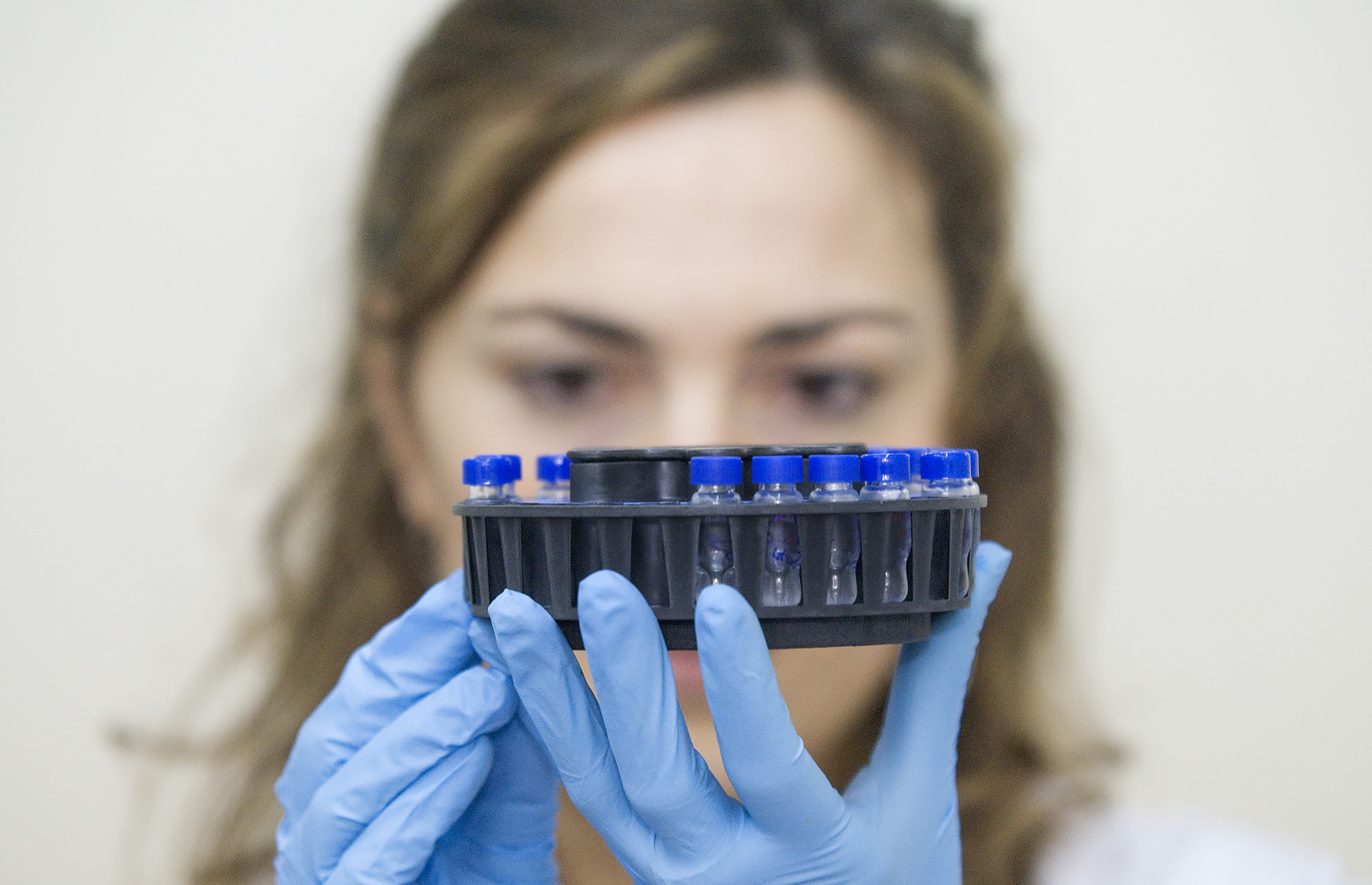Un grupo interdisciplinar de físicos y biólogos que trabajan en la investigación de las células cerebrales ha concebido una nueva y revolucionaria técnica de microscopía que, por primera vez, permite obtener imágenes de todas las células dentro de un área determinada del tejido cerebral vivo. Su principal valor es que permite obtener imágenes de todas las células vivas no etiquetadas en un área cerebral determinada, cosa que hasta ahora era imposible. Este avance científico es fruto de la colaboración entre grupos de investigación de la Universidad de Burdeos y de la UPV/EHU y el centro ACHUCARRO de Leioa. La microscopía es uno de los métodos más utilizados en la neurociencia. Esta nueva técnica permitirá mejorar sustancialmente la información que obtenemos y con ello expandir el conocimiento de la biología del cerebro.
-

Doce investigadoras de la UPV/EHU, entre las 500 más destacadas en el ránking del CSIC
-

Hablar puede salvar vidas
-

Estíbaliz Sáez de Cámara, nombrada presidenta de la REDS SDSN Spain
-

Se descubre el eslabón perdido en la historia de las lenguas indoeuropeas
-

La Escuela de Ingeniería de Bilbao instala un canal de olas de 25 metros
Una revolucionaria nueva técnica de microscopía tiene contribución vasca
Desarrollan una revolucionaria técnica de microscopía que permite visualizar todas las células de una región cerebral
La revista Cell publica el hallazgo, fruto de una investigación transfronteriza en la que colaboran la UPV/EHU, el centro Achucarro y la Universidad de Burdeos
- Investigación
Fecha de primera publicación: 23/02/2018

La microscopía es una herramienta básica en la investigación de la biología de cualquier organismo, dado que los elementos que se estudian, las células, tienen un tamaño microscópico y muchas veces, nanoscópico.
Hasta el momento, los métodos de microscopía existentes para investigar el tejido cerebral vivo se limitaban a visualizar solo las células previamente marcadas. Sin embargo, por limitaciones técnicas, no todas las células en una región cerebral determinada podían etiquetarse simultáneamente, lo que ha restringido la visión, y por tanto, la comprensión que tenemos sobre cómo las células cerebrales, que están altamente interconectadas, se organizan e interactúan.
El Dr. Jan Tønnesen (Suecia, 1977), investigador del Programa Ramón y Cajal en el Departamento de Neurociencias de la UPV/EHU, y que trabaja en el centro ACHUCARRO (Achucarro Basque Center for Neuroscience) de Leioa es una de las personas que firman un trabajo que acaba de publicar la prestigiosa revista científica “CELL”, y en el que describen una nueva técnica de microscopía, denominada “SUSHI”, para mejorar la visualización de las células en tejido cerebral vivo.
La nueva técnica SUSHI (acrónimo de su nombre en inglés “Super-resolution Shadow Imaging”) permite etiquetar de una pasada el minúsculo espacio, lleno de líquido, que rodea las células cerebrales, evitando tener que etiquetar individualmente todas las células que se quieren analizar.
Dado que además esta “etiqueta” permanece fuera de las células, produce una especie de imagen en negativo, que podemos asemejar a la película de las antiguas cámaras de fotos. Así, la imagen negativa contiene la misma información sobre las células cerebrales que la imagen positiva correspondiente, pero gracias a que el procedimiento de etiquetado es más simple, es mucho más fácil de obtener esta imagen y toda la información que contiene.
Según el Dr. Tønnesen "La técnica SUSHI es revolucionaria porque nos permite visualizar simultáneamente todas las células cerebrales en una región determinada del tejido cerebral vivo. Antes encontrábamos espacios en blanco en las imágenes de microscopía, ya que no podíamos etiquetar todas las células al mismo tiempo. Este hecho nos resultaba muy limitante. Desde ahora, con esta técnica podremos ver todas las células del área de estudio que situemos en la lente del microscopio, así como sus interacciones, de manera que podremos avanzar en nuestro conocimiento de las funciones el cerebrales, tanto en el órgano sano, como cuando enferma".
Este avance es fruto de un proyecto interdisciplinar y transfronterizo desarrollado entre el grupo de investigación dirigido por el Profesor Valentin Nägerl de la Universidad de Burdeos (Francia) y el Dr. Jan Tønnesen, que se incorporó al Departamento de Neurociencias de la UPV/EHU, y que trabaja en las instalaciones del ACHUCARRO, en el Parque Científico de esta universidad, en Leioa.
Referencia bibliográfica
- Super-resolution imaging of the extracellular space in living brain tissue
- Cell (2018, Feb 22)
- DOI: 10.1016/j.cell.2018.02.007




